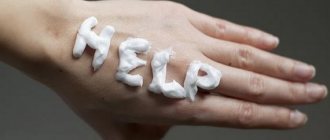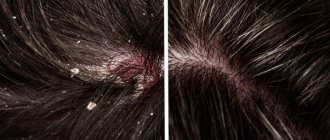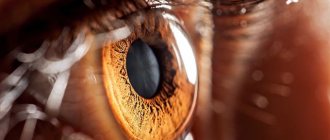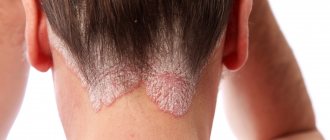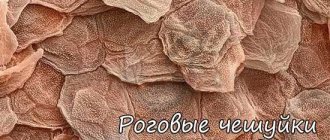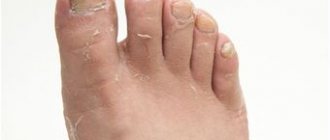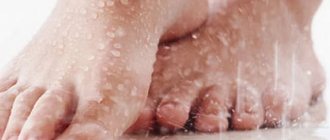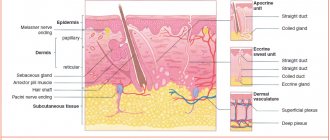What are the effects of COVID-19 on the skin?
Today, there is no person who has not heard about COVID-19.
Unfortunately, every day, more and more people come face to face with the virus. And then they struggle with the consequences, which can be very different. And such consequences may not make themselves felt immediately, but even after 2-3 months after suffering from COVID-19. Today, podologists, medical pedicurists and manicurists note the presence in their patients of the appearance of excessive or not typical before the disease, dry skin of the feet and hands, peeling, as well as the formation of keratinization, even microcracks. In some cases, even the appearance of deeper cracks is observed. In advanced cases, cracks develop into open wounds.
Pathways to treatment, supportive care and prevention may vary. But the result must be as effective as possible. This will help maintain not only the beauty of your skin, but also your health!
Eliminating symptoms
Tell your healthcare provider as soon as you develop symptoms. Be sure to tell your doctor if you have diabetes, vascular disease, or peripheral neuropathy. These diseases cause destruction of the skin, prevent wound healing and can cause infection.
Follow the tips below to help you manage these symptoms.
It is forbidden:
- Pop blisters. Apply a petroleum-based ointment, such as Vaseline®, and cover it with a bandage (Band-Aid®).
- Immerse your hands and feet in hot water or a hot bath.
- Take hot baths.
- Wearing socks, tights or shoes that are too tight.
- Doing anything that requires rubbing your palms or soles, other than lightly applying lotion or cream.
Need to:
- Wear thick, soft cotton socks with all shoes. We also recommend using wicking foam insoles and shock-absorbing inserts to ease the pressure of shoes on your feet.
- Wear heavy cotton gloves when doing chores around the house or outside the home, such as cleaning the house, gardening, or grocery shopping.
- Keep your hands and feet well moisturized. To do this, soak them in cool water for 20 to 30 minutes, pat them dry with a towel, and then apply a fragrance-free moisturizer such as Eucerin®. This should be done at least once a day.
- Use unscented lotion or cream containing petroleum products, for example: Urea cream;
- Kerasal® One Step Exfoliating Foot Moisturizer Therapy™;
- Udderly Smooth®;
- if you are over 18 years of age, you can also use the tools below; do not use these if you are under 18 years of age: salicylic acid;
- moisturizer CeraVe® SA.
- steroids;
to come back to the beginning
What causes dry skin
What is leather? This is the tissue that covers the human body, acting as protection for internal organs from external aggressors and injuries. It also protects the body from loss of moisture.
So why does the skin dry out?! When the body is under the influence of COVID-19, all internal resources are aimed at producing antibodies and getting rid of it. Against this background, many other processes slow down, for example, the process of skin regeneration. The skin becomes more vulnerable due to increased permeability. It is at this moment that the first “bells” occur, signaling that the skin condition is at risk. And, first of all, dryness appears on the skin of the hands and feet. And, if the skin is dry on its own, then the appearance of keratinization, microcracks and deeper cracks can occur at any time.
The main causes of dry skin due to the COVID-19 virus:
- Skin dehydration due to decreased skin immunity;
- Skin reaction to medications during treatment;
- For the skin of the hands - frequent use of antiseptics;
COVID-19 is a great stress for the whole body, including the skin of the hands and feet. And, even when the disease has receded and there are enough antibodies in your body, the skin barrier is not able to fully fight against a possible external threat. This can lead to recurrent illness, among other things. In order to help the skin restore its condition and establish internal processes of moisture exchange, blood microcirculation, regeneration and healthy functioning, we need the most effective products with a good reputation that meet the needs of dry skin and are safe. It is worth noting that the use of products that contain critical components may result in new problems, such as allergies, itching and rash.
Peeling skin
Measles
Scarlet fever
Fungus
Syphilis
Allergy
21774 December 14
IMPORTANT!
The information in this section cannot be used for self-diagnosis and self-treatment.
In case of pain or other exacerbation of the disease, diagnostic tests should be prescribed only by the attending physician. To make a diagnosis and properly prescribe treatment, you should contact your doctor. Peeling of the skin: causes, diagnosis, what diseases it occurs with, methods of treatment.
Definition
Peeling of the skin occurs as a result of the death of cells (keratinocytes) of the stratum corneum of the epidermis. Normally, the process of rejection of keratinized epithelium occurs constantly, but the scales and their number are small enough to be visible to the naked eye. When the processes of keratinization and death of keratinocytes are disrupted, the number of scales increases significantly; they can fall off the skin in tiny particles or merge to form large plates.
Types of peeling skin
The skin consists of several layers, the structure and role of each of them provides it with a barrier function.
Disruption of physiological processes in the skin leads to increased keratinization processes and the appearance of an excessive number of dead cells.
The color of the flaky scales can vary from gray-white to dark gray. With hyperfunction of the sebaceous glands, the scales stick together into large and fatty-looking plates. With hypofunction, the scales resemble tiny dust.
The location of peeling may depend on the disease that caused it. Increased peeling is usually observed on the scalp, in the folds of skin behind the ears, between the fingers, and on the flexor and extension surfaces of the limbs.
Possible causes of peeling skin
Peeling skin can occur in any skin type, but dry skin is most susceptible to it. Loss of skin moisture can be caused by improper selection of cosmetics (especially a passion for peeling, as well as alcohol-containing cleansing lotions and tonics), prolonged exposure to the wind, sun, dry indoor air, constitutional characteristics and age-related changes (lack of female sex hormones).
Peeling of the skin occurs due to a deficiency of vitamins (vitamin A and group B) and microelements (for example, iron).
What diseases cause skin peeling?
Atopic dermatitis
. This disease is one of the common allergic pathologies caused by immune disorders. It manifests itself as itching and rashes on the skin in the form of pink plaques or blisters with their subsequent pigmentation and peeling. In young children, an erythematosquamous form of dermatitis with redness of the skin and peeling is observed; in children 2–13 years of age, thickening of the skin with folds and scaly plaques predominates; in adolescents and adults, dryness and peeling of the skin mainly on the face and upper torso.
Psoriasis
. Psoriasis is one of the autoimmune diseases. Hereditary predisposition, immune, endocrine disorders, environmental factors and the state of the human nervous system play a significant role in its development. The disease can be provoked by stress, infectious diseases, injuries, and medications. As a rule, psoriasis begins with the appearance of pink itchy plaques on the skin, which, merging, form spots of various shapes, covered with silvery-white scales.
Plaques are localized mainly on the scalp, the extensor surface of the elbow and knee joints, and on the lower back.
When the rash is scraped, small scales give the plaque the appearance of a greasy stain, and after removing the scales, the surface of the plaque may bleed. With exudative psoriasis, the scales, under the influence of the oozing contents of the plaques, form crusts and are difficult to tear off. It is possible to localize the rashes only in areas with oilier skin (on the scalp, in the nasolabial and behind-the-ear folds, in the chest area and between the shoulder blades). In such patients, the peeling border goes down below the hairline to the skin of the forehead. With an exacerbation of the disease, psoriatic erythroderma can develop, when the process spreads to almost the entire skin, leading to swelling, redness and peeling of the skin.
Severe psoriasis is accompanied by damage to the joints, including their deformation and limited mobility.
Seborrheic dermatitis
. The disease is characterized by excess or insufficient function of the sebaceous glands. With increased sebum secretion, the stratum corneum of the skin thickens, and it becomes oily and flaky. With insufficient production of sebaceous secretion, small scales or large dry plates are formed, which are easily separated from the skin. Seborrhea affects areas with a large number of sebaceous glands (scalp, forehead, nasolabial triangle, ear area). With seborrhea of the scalp, the hair thins and falls out.
Children's infectious diseases (measles, scarlet fever)
. The rashes that appear with measles gradually become pigmented, acquiring a brown color. Their surface is covered with small scales. With scarlet fever, the skin begins to peel off after the rash disappears, small scales may cover the face, and patches of skin on the palms and soles may come off in patches.
Demodicosis
.
The disease is caused by mites of the genus Demodex
, which can also be present in small quantities on healthy skin. They are found in hair follicles and sebaceous gland ducts on the face and scalp, as well as eyebrows and eyelashes. As the colony of mites grows, pinkish spots form on the skin around the hair follicles, covered with small or large scales. Papules (nodules) and pustules sometimes form, similar to acne. In advanced cases, the skin thickens and loses elasticity. Peeling, itching, oily skin and hair loss are characteristic symptoms of the disease.
Pityriasis versicolor (lichen versicolor)
. This type of keratomycosis is caused by yeast-like fungi of the genus Pityrosporum, affecting the stratum corneum of the epidermis.
Pityriasis versicolor is not contagious, but a genetic predisposition to pityriasis versicolor has been identified in persons who are consanguineously related.
Most often, the lesion is noted at the age of puberty, since intensive proliferation of fungi correlates with hyperfunction of the sebaceous glands. Fungi form colonies in the form of yellowish-brown dots around the sebaceous glands. Merging, the colonies form pink-yellow spots, which gradually become brown-yellow. The surface of the spots is covered with pityriasis scales; they are easily scraped off, revealing lighter areas of the skin.
Pink lichen of Zhiber
. To date, the cause of the disease has not been established, but the prevailing opinion is that the lesion is viral in nature (presumably, these are herpes viruses). The disease begins with a prodromal period, which is characterized by muscle weakness, fever, and swollen lymph nodes. Then pink plaques up to 5 cm in diameter with raised edges appear on the skin, which lighten after a week. Over the course of several months, the plaques gradually disappear, becoming pigmented and peeling off. The disease develops mainly in adolescents and young adults.
Syphilis
. Syphilitic rash (papular syphilide), which is accompanied by peeling of the skin, is more common with secondary syphilis. Yellowish or bluish-red rounded papules, slightly protruding above the surface of the skin, have a dense consistency and a smooth shiny surface. Peeling of papules leads to the formation of a rim around them.
Ichthyosis
. This name combines a group of diseases, the characteristic feature of which is diffuse keratinization of the skin of the “fish scale” type. All variants of the disease (vulgar, X-linked, lamellar ichthyosis, congenital bullous ichthyosiform erythroderma) are hereditary in nature. Areas of hyperkeratosis and peeling can be localized in various parts of the body. Thus, with vulgar ichthyosis, peeling is more pronounced on the extensor surfaces of the extremities, but is also present on the skin of the thighs, forearms and buttocks, and deep folds can be seen on the palms and soles. In X-linked ichthyosis, the skin of the palms and face is not affected by hyperkeratosis. The color of the scales varies from light to dark brown. With lamellar ichthyosis, peeling affects all parts of the body.
Which doctors should I contact if my skin is peeling?
If foci of peeling appear in children, you should first contact a doctor who can refer the child to a dermatologist. Adult patients should immediately visit a dermatologist and, if necessary, an allergist-immunologist.
Diagnostics and examinations for peeling skin
To diagnose a disease characterized by peeling skin, it is necessary to do a number of laboratory tests:
- clinical blood test;
Time to choose professional foot cosmetics
It is also worth paying attention to the fact that if after COVID-19, the skin has become very dry, vulnerable, and cracks have also appeared, then caring for such skin should not only be effective, but also as gentle as possible! That is why podiatrists recommend products from the manufacturers presented in the article. This will help take care of the skin of your hands and feet during the recovery period after suffering from the COVID-19 virus.
The thickness of the skin of the hands on the side of the palms is thicker than its outer part. The skin of the feet is the thickest. Its thickness reaches 4 mm. But this does not mean at all that it is the least vulnerable and less permeable. On the contrary, the skin of the feet carries a number of important functions that are not characteristic of other areas of the skin. That is why podiatrists pay special attention to foot skin care, highlighting a range of products for basic foot care.
Gehwol Lipidro Cream Hydrobalance Cream from Gehwol
It is recommended to apply twice a day (morning and evening) during the period of active skin restoration, one application to maintain the result as a regular care.
Hydrobalance cream with jojoba oil Baehr PediBaehr Hydrobalance Creme from Bayer
A similar recommendation is two-time application (morning and evening) during the period of active skin restoration, one application to maintain the result as regular care.
Moisturizing foot cream with hop extract and valuable oils Suda Nature Fusscreme from Süd
The product of the new organic line has managed to establish itself well among specialists. It is recommended to apply twice a day (morning and evening) during the period of active skin restoration, one application to maintain the result as a regular care.
Yes! These products are recommended for use on feet and hands. Their active compositions allow you to take care of the skin of your feet and hands equally effectively. If the dry type of skin on your feet has keratinization and rough areas, for greater effectiveness it is recommended to use a foot bath and a scrub with an exfoliating effect before applying the above products. Complex action: Bath – scrub – basic care will allow you to get a faster and more reliable effect.
You can choose a bath or foot scrub for dry skin in our SPA foot .
Folk skin care products
To prevent the skin from peeling after washing and taking water treatments, you must use the following products or procedures.
- Hydrocortisone cream is considered a very good and quick remedy for moisturizing and eliminating dry skin. It can be used both on the hands, especially when the skin is cracked, and on the face. If the integrity of the skin is damaged and there are skin diseases, it is not recommended to use it.
- Facial cleansers. They are best used before applying a cream or ointment, as a preparatory step for applying a deeper action product.
- Olive oil is the simplest and most effective remedy for combating dryness. It absorbs very well, and is best used immediately after a shower: apply a thin layer and let it absorb for 15 minutes.
- To prevent the skin on your face from peeling after washing, it is good to use yolk masks.
In conclusion, we can add that all skin care products, both folk and cosmetic, are good, it is important to choose what suits your skin type.
What is important to remember
Taking care of your skin does not end with the final touch in the process of treating a disease. When choosing professional cosmetics and cosmeceuticals for skin care, you choose the quality of each component, the action of which, together with others, makes up the unique formula of the entire product to solve your problem.
Having such a remedy, day after day, you will come to good results that will please you and help you forget about your recent illness and its consequences in the form of dry skin on your hands and feet. Next - just regular skin care that maintains healthy skin, which VseDlyaNog.RF specialists will help you choose.
Caring for dry skin should not end when obvious dryness disappears. Skin care should have a regular basis. Only then will your skin be hydrated, elastic and young!
Medicines that may cause a reaction
Hand-foot syndrome
The following medications may cause hand-foot syndrome.
- capecitabine (Xeloda®);
- Doxorubicin (Adriamycin®)
- Fluorouracil (5-FU®)
- Liposomal doxorubicin (Doxil®)
- Cytarabine (Cytosar-U®)
Palmoplantar skin reaction
The following medications may cause hand-foot reaction.
- Sorafenib (Nexavar®)
- Sunitinib (Sutent®)
- Cabozantinib (Cometriq®)
- Regorafenib (Stivarga®)
- Axitinib (Inlyta®)
- Pazopanib (Votrient®)
- Vandetanib (Caprelsa®)
- Vemurafenib (Zelboraf®)
- Dabrafenib (Tafinlar®)
to come back to the beginning
When should you contact your healthcare provider?
Call your healthcare provider if you experience any of the following:
- temperature rises to 100.4°F (38°C) or higher;
- chills;
- symptoms do not go away or get worse;
- any of the following symptoms appear on the skin of your palms or soles: skin that is hard, warm, or hot to the touch;
- bright yellow or green discharge;
- bleeding;
- unpleasant odor from the palms and feet;
- increasing redness or swelling;
- increasing pain or discomfort;
to come back to the beginning
